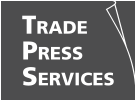
Corporate values are the fundamental principles that guide an organization’s decisions and actions. These values form the bedrock of a company’s identity and articulate what it stands for. An organization’s culture reveals how these values manifest themselves in everyday workplace reality—the behaviors and attitudes that shape employee experiences. Culture is values in action. Brand promises are the commitments companies make to their customers, describing the type of journey customers can expect to have with them. These promises should naturally flow from the values and be consistently delivered through the culture.
When these three elements work in harmony, organizations build trust internally and externally. When they are misaligned, they create confusion and disappointment for leaders, employees, customers, and other stakeholders.
Warning Signs of Misalignment
Several warning signs indicate when values, culture, and brand promise have fallen out of alignment:
- Knowledge gaps. Employees at every level cannot clearly articulate the company’s values or brand promise
- Delivery challenges. Customer-facing teams feel unprepared or unsupported to deliver on brand promises
- Customer experience inconsistency. Customers experience different service levels or messaging across channels or teams
- Workforce issues. High employee turnover or disengagement signals a disconnect between stated values and cultural reality
- Growth pains. Culture clashes during scaling, acquisitions, or rebrands reveal underlying misalignment.
These red flags provide leaders with valuable information to acknowledge problems and use them as a starting point for realignment.
Best Practices for Creating Value-Culture-Brand Alignment
Beginning with clearly defined corporate values is critical. These pillars should authentically represent what the company stands for and should be meaningful, specific to your organization, and directly connected to the organizational mission and vision. It’s best to keep values limited to a manageable number (typically between three and seven) and expressed in a language that resonates with employees, customers, and other stakeholders. Amazon cites four core corporate values: customer obsession rather than competitor focus, passion for invention, commitment to operational excellence, and long-term thinking. Coca-Cola’s values center around leadership, collaboration, integrity, accountability, passion, diversity, and quality.
Core values need to be communicated throughout the organization and understood by employees at every level. Every employee at Ritz-Carlton hotels, from the valet to the CEO, is required to memorize the corporate credo and 10 ideals. A laminated corporate credo card is also a mandatory element of every employee’s uniform. By memorizing and repeating these standards daily, the company has created a framework for values that is ingrained across its entire collection of properties worldwide.
Pro tip: A brand’s core values serve as the foundation for the company’s internal culture and external brand promise.
The next step is fostering a company culture that embodies its values. To create alignment between the two, leaders can translate high-level values into specific behaviors and expectations for each department. For example, if a brand’s values center around innovation, empower employees with the freedom to develop new products and services. It’s vital for leaders to model values-based behaviors consistently. Systems and resources that reinforce values, such as recognition programs and decision frameworks, further support a values-culture alignment. For instance, if exceptional service is a value, it’s essential to allocate for adequate staffing.
Pro tip: Companies often make the mistake of promising white-glove service or rapid response times without supporting employees with the necessary tools, training, and support to deliver on the promise.
Once the values and culture are firmly in place, it’s time to craft brand promises that can be fulfilled consistently. The brand promise should be a natural extension of your values and culture. When crafting the messaging for the brand promise, only commit to what your culture can deliver consistently and well. Test brand promise messaging throughout the organization before launching to target audiences. Create feedback loops to evaluate how well brand promises measure up to real-world customer experiences. Consistently monitor any gaps between what you promise and what you deliver and make any necessary adjustments to internal processes.
Pro tip: It is paramount for high-level messaging to translate into specified behaviors and expectations, ensuring the brand promise is understood and actionable for every department.
Tracking Success
Brand-culture alignment tracking is vital and includes using qualitative (testimonials and stories) and quantitative (retention, engagement, customer satisfaction) data. Survey employees to assess internal culture and identify gaps between the ideal and the real. Accomplish this by auditing internal values, communications, leadership behavior, and employee perceptions. In addition to surveys, consider interviews, onboarding materials, and customer feedback comparisons to monitor progress and areas for improvement. Business leaders might consider developing a cultural alignment map, highlighting what behaviors and processes do or do not support the brand and its promise.
Employee Empowerment: The Bridge Between Values and Promise
Employees are the critical link between internal values and external brand delivery. Strengthen this connection by reinforcing the brand promise throughout the employee journey—from hiring and onboarding to daily decision-making. The most successful organizations embed culture checkpoints in leadership evaluations, employee reviews, and brand culture health surveys. A great way to regularly reinforce the brand commitment is by sharing company-wide memos or newsletters that share real employee examples of brand-aligned behavior.
Invest in training leaders on how to model and teach culture-driven behavior. This includes encouraging cross-department collaboration to reduce silos and reinforce goals. Equipping teams with messaging guides, service standards, and feedback tools goes a long way in empowering employees with autonomy and clarity about how their work supports the brand.
Brand-Culture Evolution

Strong, authentic brands start from within, relying on employees who believe in and exemplify the brand promise. Establishing a values-culture-brand alignment team helps employees thrive and ensures successful strategic pivots without sacrificing customer experiences. During major transitions, like mergers and rebranding, regularly reassessing alignment keeps organizations on track toward company goals.
As markets shift, priorities and promises may change, and the corporate culture needs to evolve alongside. Leaders who consistently audit, grow, and recommit to a corporate culture that works in tandem with brand promises are more likely to achieve lasting success than those who don’t.

